Popular in America under the name “Red Russian kale”, in Europe “Grunkohl” used in exotic dishes of Russian restaurants, vegetarians love “green beef” - Kale cabbage is little known to Russian gardeners as an edible crop, often grown to decorate the garden. Without begging her decorative qualities, nevertheless in the first place - this is a storehouse of substances useful to the human body, indispensable in the daily diet.
Material Content:
Useful properties of kale cabbage
The healing properties of Kale cabbage are of interest for various fields of medicine: cardiology, neurology, ophthalmology, rheumatology, oncology and especially vegetarian dietetics. It has already been proven that by the number of Omega-3 polyunsaturated fatty acids in it, which protect the cell membranes of organs from destruction, and cleanse the body, it has no equal among leafy types of vegetables, for example, in a glass of stewed feces they contain the same amount as 100 g of pink salmon or sea bass.
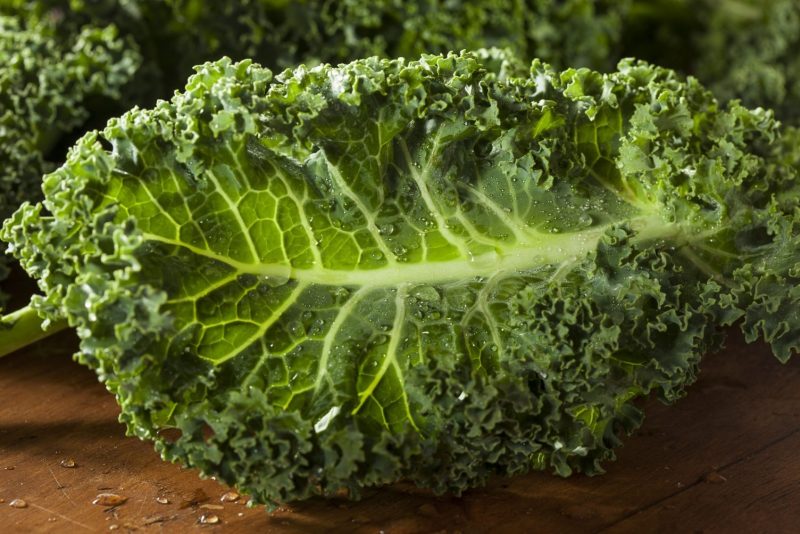
Including kale cabbage in the food, the body receives:
- the ideal ratio of easily digestible proteins (9 of them are irreplaceable) and carbohydrates, the daily norm is contained in 200 g of vegetable;
- a large amount of calcium: in 100 g of cabbage - 135 mg, and in cow's milk - 113 mg, a significant amount of magnesium (20%) helps to regulate its absorption (indicated for excess elemental calcium);
- lutein and zeaxanthin are the necessary oxygen-containing carotenoids that are part of the retina (not synthesized by the body itself), responsible for visual acuity, filtering ultraviolet light;
- fiber, which outnumbers white cabbage, removes toxins and toxins from the intestines, contributing to the growth of beneficial microflora;
- a vitamin reserve that supports the vascular tone of all organs, prevents the formation of calcifications, lowers cholesterol, improves immunity, and helps to renew the cells of the body’s tissues, normalizes metabolic processes. For example, vitamin K, the lack of which is manifested by increased bleeding, long healing wounds, increased pain threshold, the development of osteoporosis, ossification of cartilage, bone deformation: 100 g of the product contains 750% of the daily norm. Also C, E, beta-carotene (elixir of youth), coordinating vision, maintaining a healthy state of the skin, hair, nails, enhancing resistance to stress - 200%;
- selenium, indole-3-carbinol, which have anti-estrogenic and antitumor effects, correct pathological processes in the reproductive organs, and also protect the brain during chemotherapy.
Being a find for people who adhere to dietary nutrition, Kale cabbage has a high nutritional ability, at the same time it remains a low-calorie product (100 g - 28 kcal), which retains its properties after light heat treatment. When used fresh, it is slightly bitter - this taste disappears after freezing, it is not without reason that gardeners collect it after frost.
Types, varieties and description of cabbage Kale
The aesthetic appearance of the plant distinguishes it from other species of relatives related to the cabbage family. It is believed that Kale leaf cabbage is the most ancient cultural form of wild cabbage.
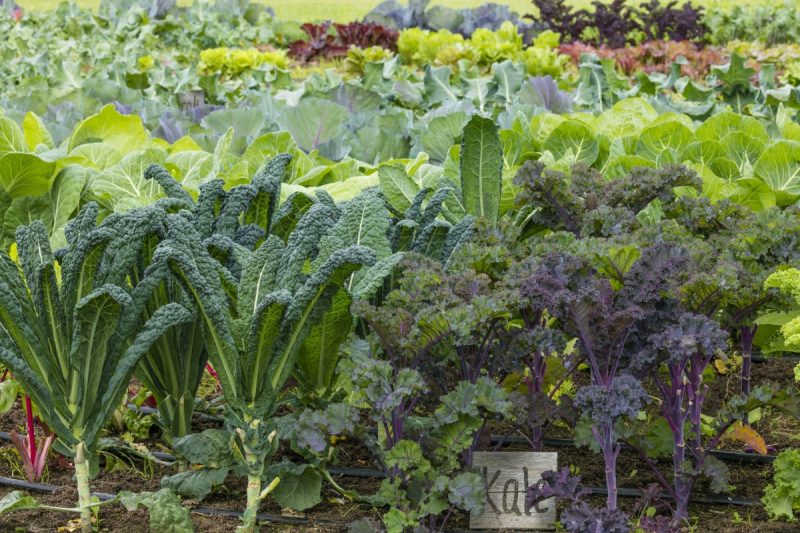
A variety of configurations and shades of leaf plates located on a solid stem, in some cases, shortened (stump), are not tied into a head, but form a rosette of spreading corrugated leaves, which is why it is called “gruenkol” in Europe, which means “loose”.
The aerial part grows out of a powerful rod root system that allows the plant to endure drought. Some species survive even severe frosts, without requiring winter shelter, providing a repeated opportunity to give fresh shoots in spring. In the place of cut leaves, new openwork leaves grow again, providing a crop before snow falls. Gruenkol blooms and forms seeds in the second year of life. The unpretentiousness of the plant, resistance to diseases allow it to grow in all climatic regions.
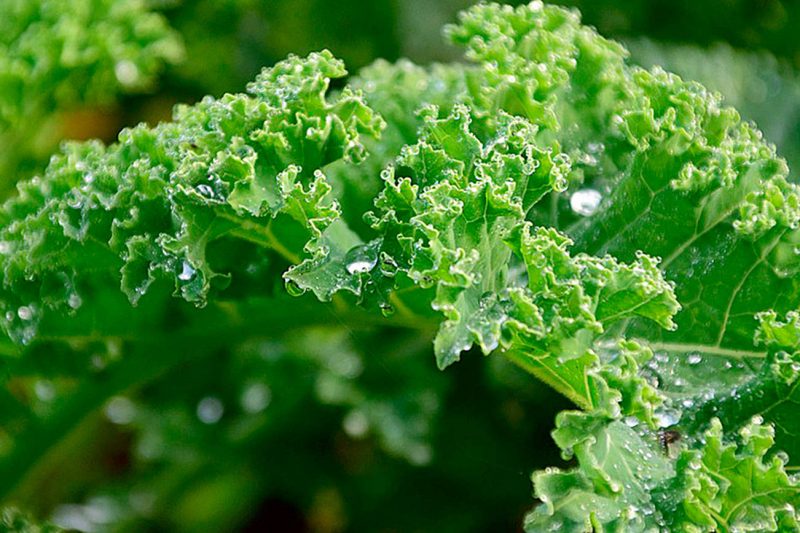
Species diversity is not numerous, all varieties are bred from wild cabbage, therefore undemanding and hardy. Conventionally, plants can be divided into green species - more delicate varieties and with a brown or purple hue - frost-resistant.
Differing in the form, structure and shade of the leaves are stunted, growing up to 40 cm, medium-tall up to 90 cm and tall up to 1.5 - 2 m. The ripening dates for varieties are also different.
- Green Dwarf. A small bush 35-40 cm tall with snowy corrugated leaves of light green color, resembling a salad. Early ripe, cold-resistant.
- "Black Tuscany." It has a basal rosette of long, narrow tuberous leaves of malachite color with a bluish tint, with a pronounced bright central vein. Prefers a warm climate.
- Dino Another representative of the southern climate with the most delicious leaves, similar to Tuscany.
- "Siberian". The opposite grade, can withstand severe frosts, unpretentious in care. Leaves like wild cabbage are flat leafy plates on long stalks with jagged edges of green-gray color, practically not affected by pests.
- "Reflex F1". Large palm-shaped bushes reach 80-90 cm in height. Wrinkled leaves of a juicy green color have a pleasant taste. Cold-resistant, mid-season grade.
- "Redbor F1". Hybrid curly cabbage with delicate terry purple leaves and a pleasant taste. It grows to 1 m.
- "Red."An unusual decorative shade of wrinkled leaves is combined with plant endurance and useful properties. Seeds of this variety germinate at a temperature of +4 +60. In height reaches 50-80 cm.
- "Reed". In southern countries, grows up to 2 meters or more, representing a palm tree with spreading wavy leaves.
Regardless of the type of cabbage Kale, only leaves are eaten, the stem has a rigid structure.
The nuances of growing plants
Growing cabbage Kale is not much different from any other group of vegetables. Cultivate it as a seedling method, and seeds in open ground. The only nuance is the intolerance of transplantation, therefore, if it is possible to land directly into the ground, the seedling method is preferred.
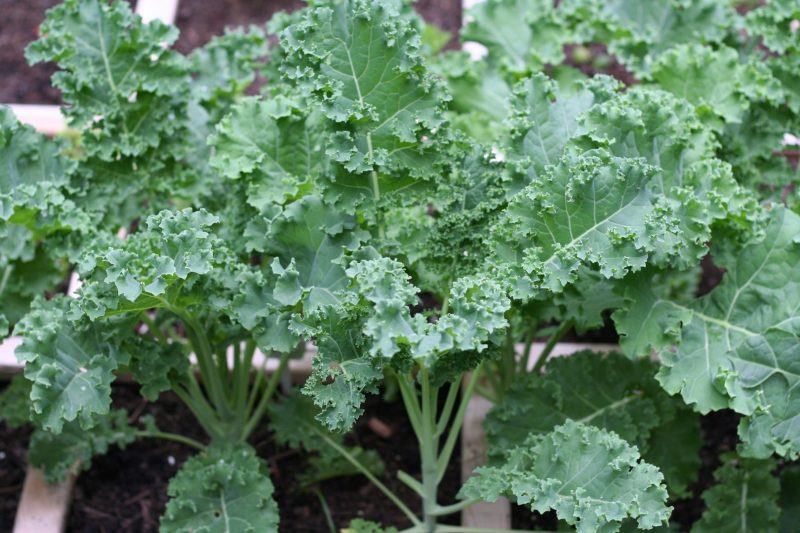
The plant prefers elevated sunny places, but also tolerates light penumbra, with loose fertile lands of a neutral or slightly acidic reaction. To get a good crop, crop rotation must be observed. It is not necessary to plant cabbage after the "cruciferous", it does not tolerate the neighborhood with strawberries, but prefers the soil after nightshade, bean and pumpkin crops.
The soil before planting is fertilized with organic fertilizers and ash; it is better to apply directly to the hole, for example, 100 g of compost and 100 g of ash. As the cabbage grows, it is necessary to spud, removing weeds. A prerequisite for saturation, juiciness of leaves is daily watering. To preserve moisture in the soil, mulch is used.
How to grow seedlings at home
Seedlings are used by gardeners in the northern regions, where spring return frosts often occur, although the rooted seedling Kale is no longer afraid of frost, after thawing the sprout continues to grow, as if nothing had happened. But to get a good harvest, saturate the leaves with useful substances, cabbage seedling must go through its growing season, mostly 75-90 days.
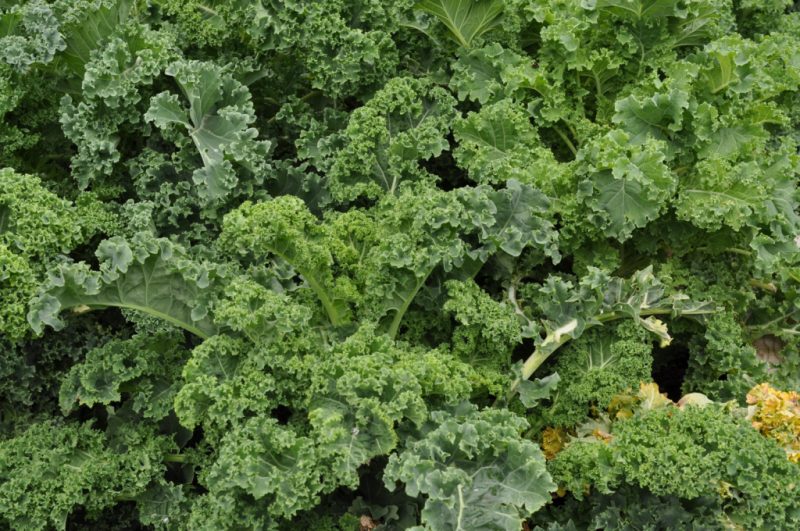
Conventional seeds (not coated) are soaked in a warm pink solution of potassium permanganate for 15-20 minutes, washed under running water. Having dried a little, they are sent for several hours to the freezer. After 5-6 hours, the seeds are moved to a warm place for another 5-6 hours, then again in the freezer. These manipulations are repeated three times. Stratified seeds are wrapped in moist tissue and placed in a warm place for germination.
Soil mix for seedlings should be nutritious, light, with good aeration.
The composition of the mixture:
- 1 part garden land;
- 1 part humus;
- 5 parts river sand, perlite, another baking powder.
The soil mixture must undergo mandatory disinfection - this will prevent the development of fungal spores remaining in the ground. Use any method: heating in the oven at a temperature of 200, etching with boiling water with potassium permanganate.
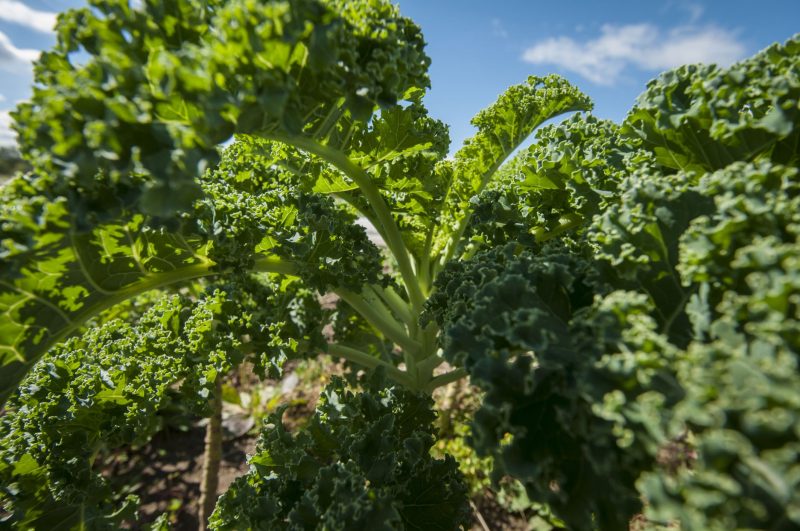
Fill the planting capacity with moist soil mixture, make grooves 2 cm deep. Sow the seeds that have been hatching into grooves, sprinkle with earth 1-1.5 cm, and gently compact. To water. Move the container to a warm, bright place (+220), cover with glass or cling film.
The abundance of light - this is the main condition for the maintenance of seedlings, otherwise the seedlings will stretch, will be less viable. Further care consists in daily ventilation of the planting for 2-3 hours, keeping the soil moist. Use spray from a spray bottle. It is important to prevent waterlogging or drying out of the soil.
As seedlings appear, thin out the plantings, choosing the strongest shoots, leaving a distance of 2-3 cm between them. When a cotyledon pair of leaves appears, the shelter can be removed. For the growth of seedlings, a temperature of 16-180 is enough. Do not forget to ventilate the room - cabbage loves fresh air, but without a draft.
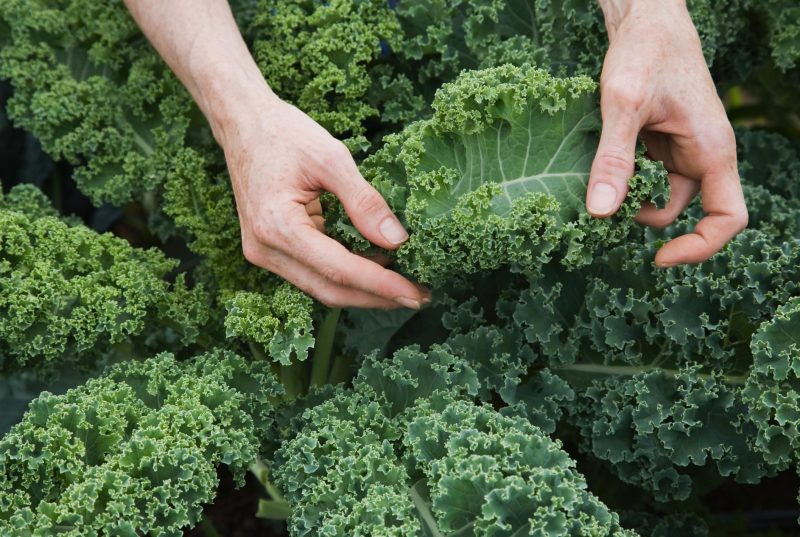
After 2 weeks, 2 pairs of leaves will appear - you can dive into individual pots (always with a lump of earth). According to gardeners, spiked sprouts turn out to be more hardy.Those who do not agree with this opinion can plant germinated seeds immediately in individual containers, which cancels thinning and picking.
This stage of vegetation takes a long time, only after 4-6 weeks the seedlings will be ready for planting in open ground.
Rules for planting cabbage Kale: how and when?
Given the long period in the stage of sprout formation, it is better to plant Kale cabbage for seedlings 5-6 weeks before planting in open ground, and in a non-seedling method in mid-late April (this method is acceptable only in the southern regions or in greenhouses).
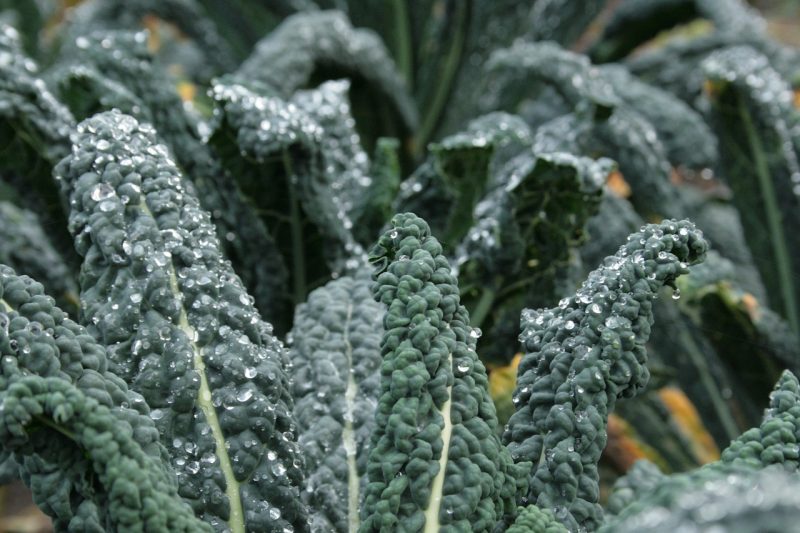
The main condition is that the temperature of the land for sowing seeds should be at least + 50-60, and for planting seedlings +150.
Kale kale is a perennial culture that can grow in one place for up to 3 years, prepare the appropriate place, away from carrots, turnips, parsnips, radishes, as these plants attract butterflies of whites and mining moths, whose caterpillars eat the leaves of Kale.
Forming the beds, it is worth considering the spreading of the bush of an adult plant. Depending on the variety, the distance between the shoots should be at least 35-40 cm, and between the rows - 50 cm, since the grown cabbage seedling requires repeated hilling.
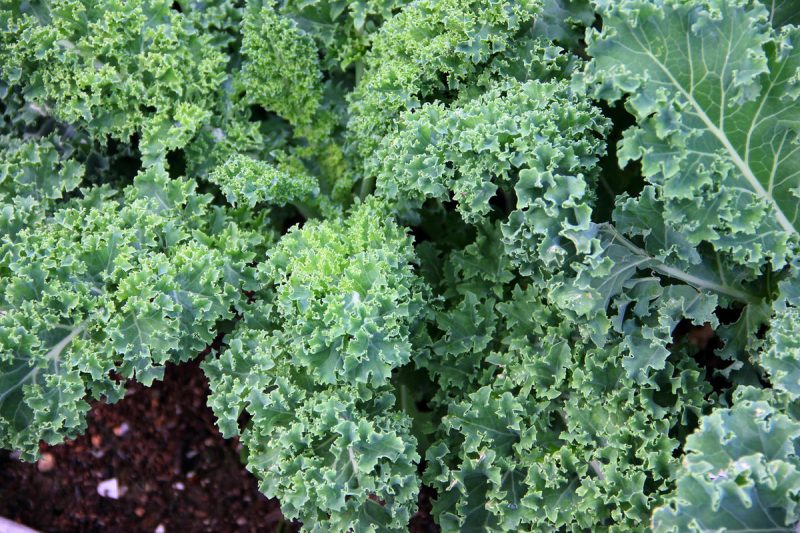
In a hole fertilized with ash and humus, a seedling is placed together with a lump of earth (the root neck should be at ground level), well shed. Mulch the ground around with sawdust or straw to prevent weed growth and drying out of the soil.
Outdoor Kale Cabbage Care
Kale is an unpretentious plant, but it is a leafy vegetable, so the taste of the plant also depends on the juiciness of the leaves. Maintaining the soil in a wet state contributes to a better saturation with useful trace elements of plant leaves.
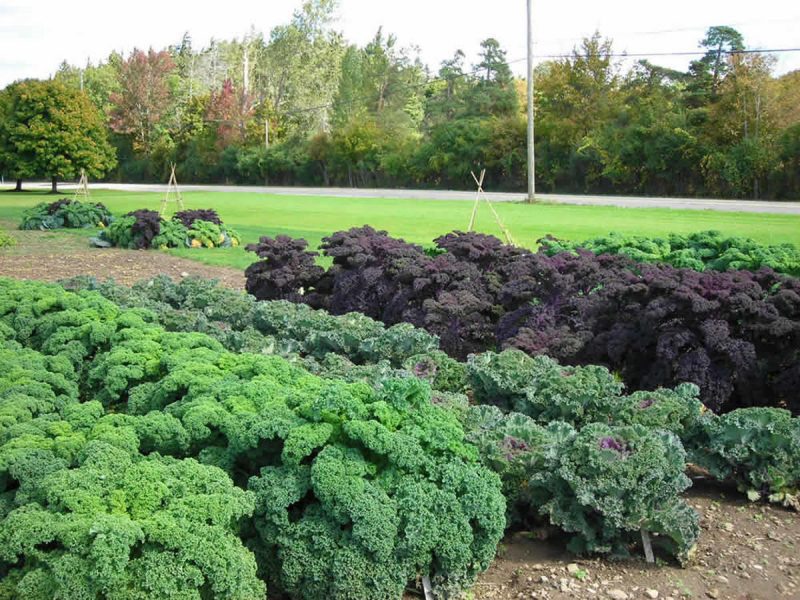
The grown seedlings need to be spudded, thereby strengthening the root rosette of the leaves, allowing the appearance of additional suction roots, removing weeds, and again mulching the soil around the bushes.
After 1.5 months, they are fed with complex mineral fertilizers (1 tbsp. Urea per bucket of water). After 6-8 weeks, another one is carried out (nitrophoska 1 tbsp. Tablespoon per 10 liters of water), often there is no need, overfeeding is harmful leafy vegetables.
During the season, plants are examined for diseases and pests, preventive treatments are carried out only with biological products.
Diseases, pests and methods of dealing with them
Kale cultivars are rarely affected by diseases and pests, however, garden slugs, caterpillars of the whitewash, scoops, aphids, cruciferous fleas, cabbage moths can attack bushes. Prevention and treatment is the treatment with insecticides "Aliot", "Actofit", "Decis", folk remedies: infusion of garlic, onion husks, wormwood herbs and others, dusting with ash, tobacco dust.
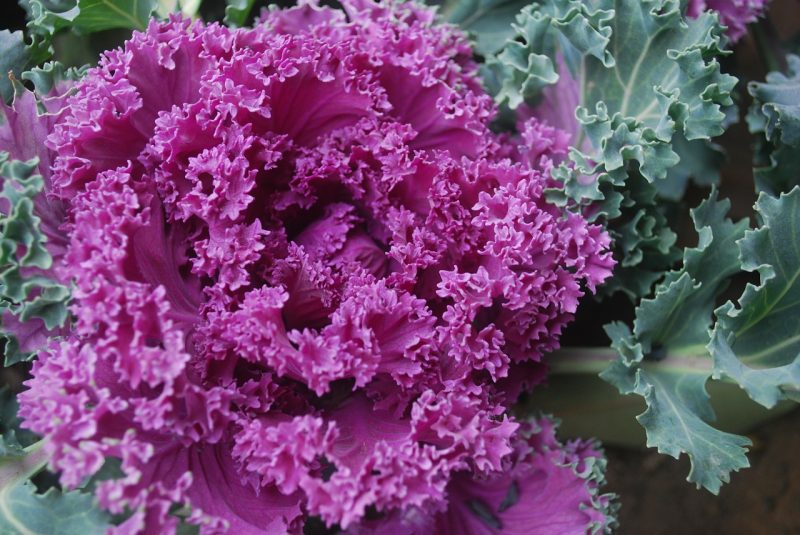
In rainy cold summers or in arid hot weather, Kale can undergo fungal diseases: keel, peronosporosis, powdery mildew, gray rot. At the first signs, it is necessary to carry out the processing with biological products “Khom”, “Fitosporin”, “Fitoverm”.
Processing is carried out in cloudy dry weather or in the evening.
Harvesting and storage
The first lettuce leaves can be collected after they reach 20 cm.
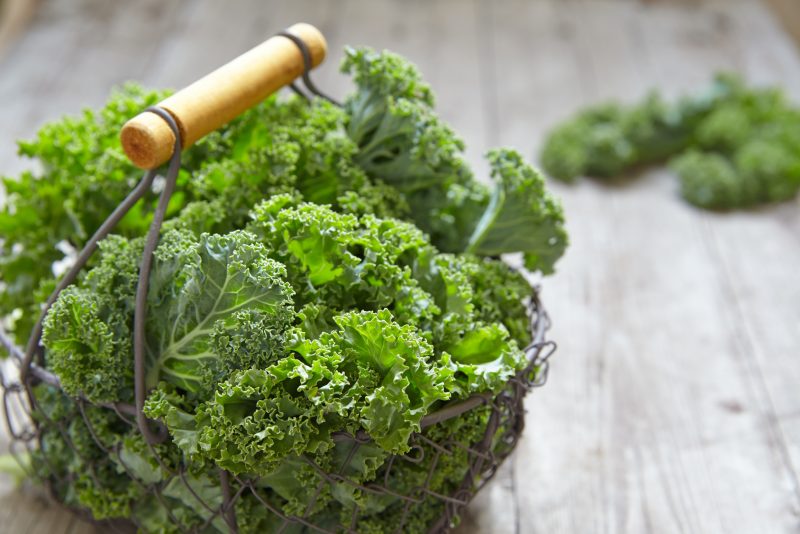
Full ripening of the bush depends on the cultivated variety and planting method:
- landing in open ground - 70-90 days;
- seedling method - 50-60 days.
It is not recommended to overexpose Kale cabbage in the garden - the leaves become bitter and stiff. Cutting off the ripened rosette of leaves, leaving a 5-10 cm stalk, it becomes possible to grow fresh leaves that can be collected even from under the snow.
Harvested cabbage is stored in the refrigerator for up to 10 days or more. It is frozen in a freezer, fermented, like white tea. They are used in harvesting salads for the winter, providing themselves with a vitamin and mineral complex for the autumn-winter season.












